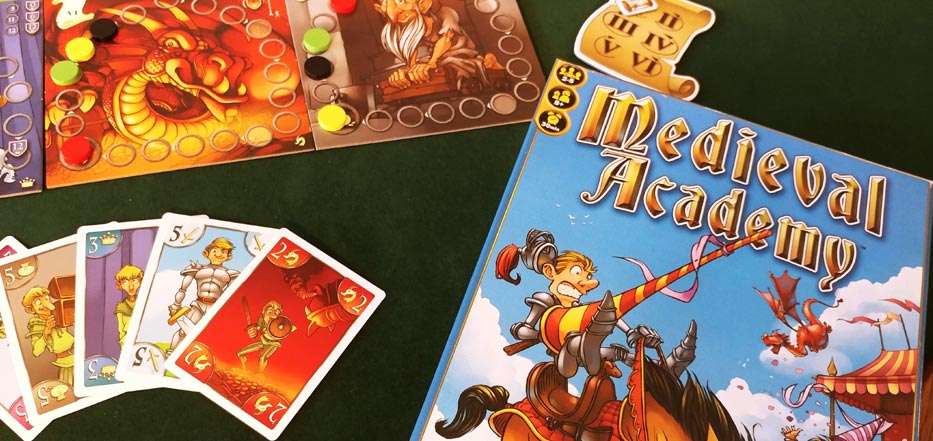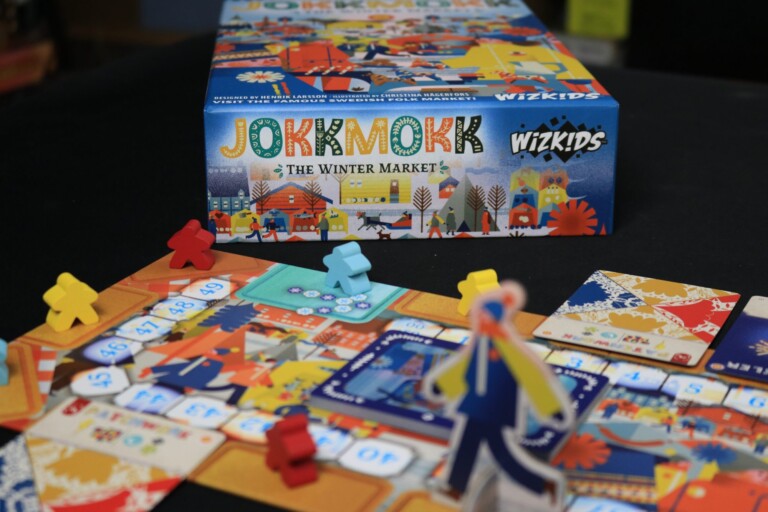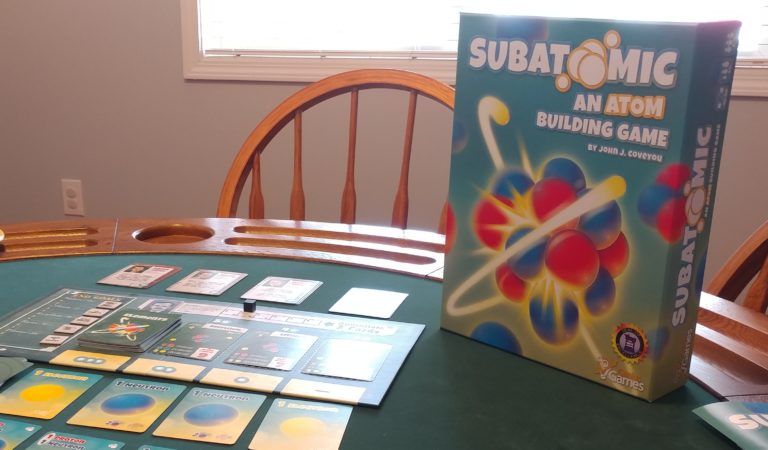Oh, the good ol’ days of school. Learning ancient spells, sparring in the fields, jousting against your friends at the end of the day, trying to win the heart of the princess.
Okay, either I was home-schooled at a renaissance fair, or I’m starting to replace my actual memories with games of Medieval Academy.
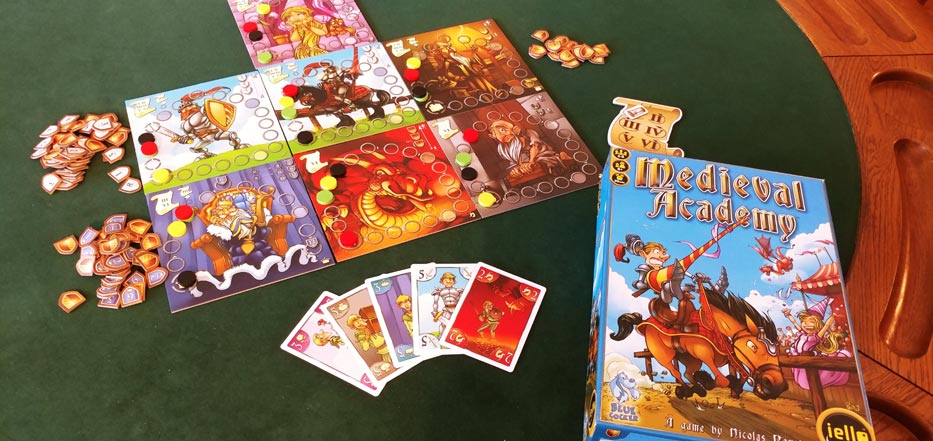
This game’s a few years old, but I only got my hands on a copy at Origins this past summer. I’d seen it on sale through a few different retailers, but I didn’t really know anything about it. But it was on super sale at the convention, so I figured it wouldn’t hurt to pick up a copy. What I found was a game that has quickly rocketed to my top 10 games list, and I plan to spend the rest of this review convincing you to give it a try.
Medieval Academy is one part card drafting, one part worker placement. Each of the six rounds is broken up into three phases. In the first drafting phase, players will select a card from their hand, then pass the rest to their left or right. Each of these cards features a number one through five on them, as well as artwork that matches one or two of the seven different areas that make up the game board.
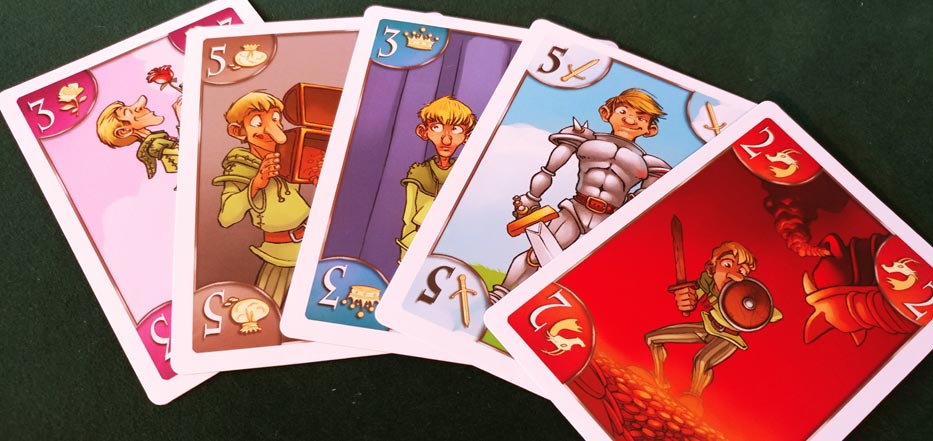
Once each player has a stack of five cards in front of them, it’s time to move to the play phase. On a turn, players will use one of their cards to progress a token in one of the seven areas. All but one of the cards will be played from their hands, and ties are broken in favor of the last person to land on a spot, so there are some calculations to do around which cards to play and when.
After cards have been played, the resolution phase begins. Each section that makes up the board provides some special bonus to the players whose tokens have progressed furthest on that particular track. Some award victory points at the end of round. Others take away victory points from the players who have progressed the least on the track. Still others don’t trigger until the very end of the game, paying off big dividends to whomever is in the lead. Once all of these locations have been resolved, play moves to the next round, and everything starts over.
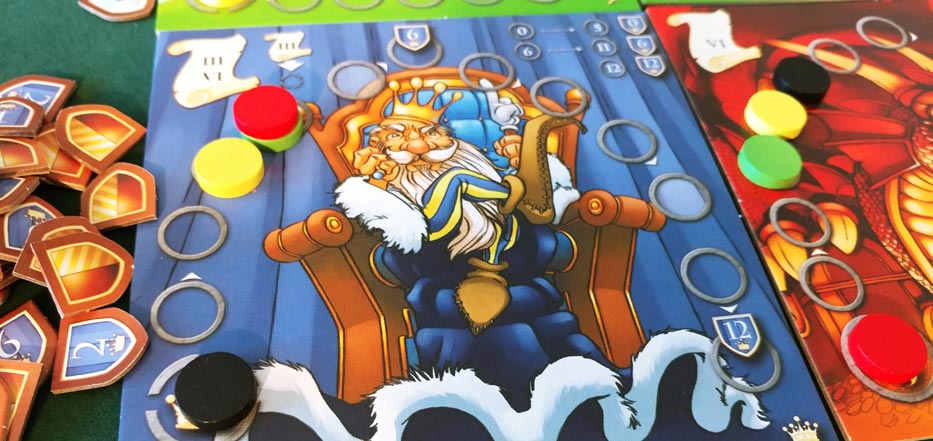
Play continues until the end of the sixth round when the big tallies are finally decided and points are passed around. Whoever ends up with the most points at the end of the game wins!
I really like Medieval Academy’s approach to decision making. There are so many options on the board at any one time, but they are all very simple. You quickly know whether or not a move is going to place you ahead of another player and pay off dividends. Analysis paralysis might be present in other games that provide so many options per turn, but I have found that it’s not too bad in this game.
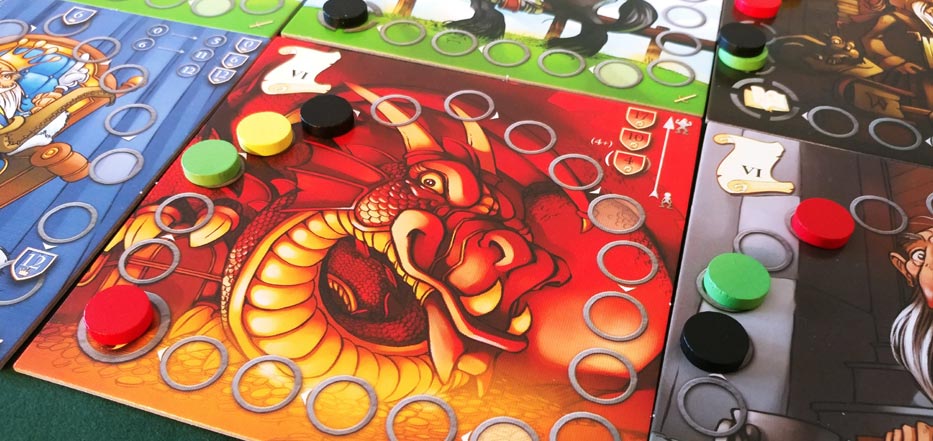
I also appreciate the rivalries that start to build up so quickly in the game. One of the first times I played the game was with some new teachers at my school. I had barely had a conversation with some of these people, and by the middle of the game they were pulling off moves that gave them tiebreakers over me and laughing maniacally while they did it. But I was never insulted. Good moves got oohs and aahs and playful comebacks from other players. This is the kind of backstabbing I prefer. It’s quick and expected, so it’s hard for players to get tremendously offended when a plan is ruined.
The whole process is just so smooth, too. Once you get into the third or fourth round with new people, everyone knows what they are doing and things happen pretty quickly. While there are certainly pauses to think through card selection, it never became super noticeable.
My dislikes for the game are few and far between. I guess I could complain about how the tokens slide around on the flat location boards, or how an entire plan for success can be undone right at the end of the game if other players want to mess with you. But really, I would be nitpicking at that point. Medieval Academy is a really solid game that is well balanced, well timed, and just a lot of fun to play. And I haven’t even gotten to the fact that each tile flips over to a more advanced side! We tried some of these out at Atlanta Game Fest, and while some are better than others, it’s great to have the additional options.
So guys. Seriously. Believe me on this. This is a game you want in your collection. It’s not something that you’ll build a game night around, but it could easily become a regular starter or quick play. I hear rumors that it’s going out of print soon, but it’s available on Amazon (for about twenty bucks!) and other online board game retailers, so you can certainly get your hands on a copy. So stop reading this! Go out and buy a copy of Medieval Academy and have some fun knocking your family members off of a horse with a really long stick.
You can pick up a copy of Medieval Academy online at Amazon.
Highs
- Quick to learn, easy to master
- Variations for all board tiles
- “Take that” without the anger
- Fun artwork
Lows
- The little tokens are so tiny, you feel like you’ll lose them all immediately

